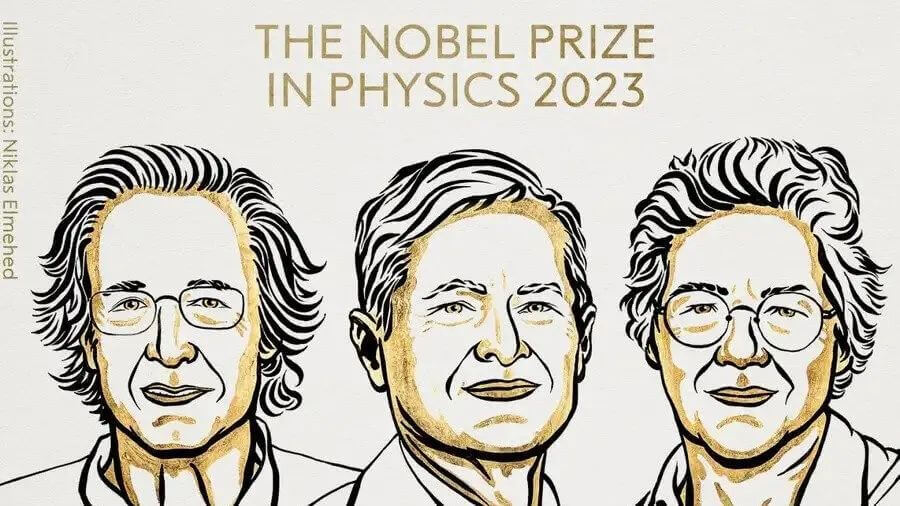The 2023 Nobel Prize in physics has been awarded to three scientists who created pulses of light so short they can be used to watch the inner workings of atoms.
Pierre Agostini, Ferenc Krausz and Anne L’Huillier will share the 11 million Swedish krona ($1.02 million) prize for devising a way to generate pulses of light measured in attoseconds — one quintillionth of a second — the Royal Swedish Academy of Sciences, which selects the Nobel laureates in physics, announced on Tuesday (Oct. 3).
An attosecond is to a second what a second is to the age of the universe — a miniscule slice of time so short it can be used to peer at the movements of electrons and molecules.
L’Huillier, a physicist at Lund University in Sweden and only the fifth woman to receive the prize, said by phone at Tuesday’s press conference that she was teaching when she received the news.
“The last half hour of my lecture was a bit difficult to do,” she said. “As you know, there are not so many women that get this prize, so it is very, very special.”
When light particles, or photons, stream into eyes, human perception stitches together the individual images they carry into a film of continuous movement, but its precision is limited by the speed of the brain’s visual processing.
Artificial devices also have a limit: the length of the light pulses used to chop up a given process. This means that physicists can only view processes involving atoms and electrons with the tiniest trains of light.
The trio’s contributions began in 1987, when L’Huillier found that beaming laser light through a noble gas produced many overtones of light, each with different frequencies. If these overtones were placed on top of each other so they mostly cancelled out, L’Huillier discovered that she was left with an incredibly short pulse of light.
Her work was later taken up by Agostini, a physicist at The Ohio State University, and Krausz, at the Ludwig Maximilian University in Munich, Germany, who refined the method to produce consecutive pulses of 250 attoseconds and an individual pulse of 650 attoseconds.
The technique paves the way for observation and control of electrons, which are responsible for transmitting electricity, and molecules useful for medical purposes on the tiniest of scales, the Nobel committee said.
“We can now open the door to the world of electrons. Attosecond physics gives us the opportunity to understand mechanisms that are governed by electrons. The next step will be utilising them,” Eva Olsson, the Chair of the Nobel committee for physics, said in a statement.

